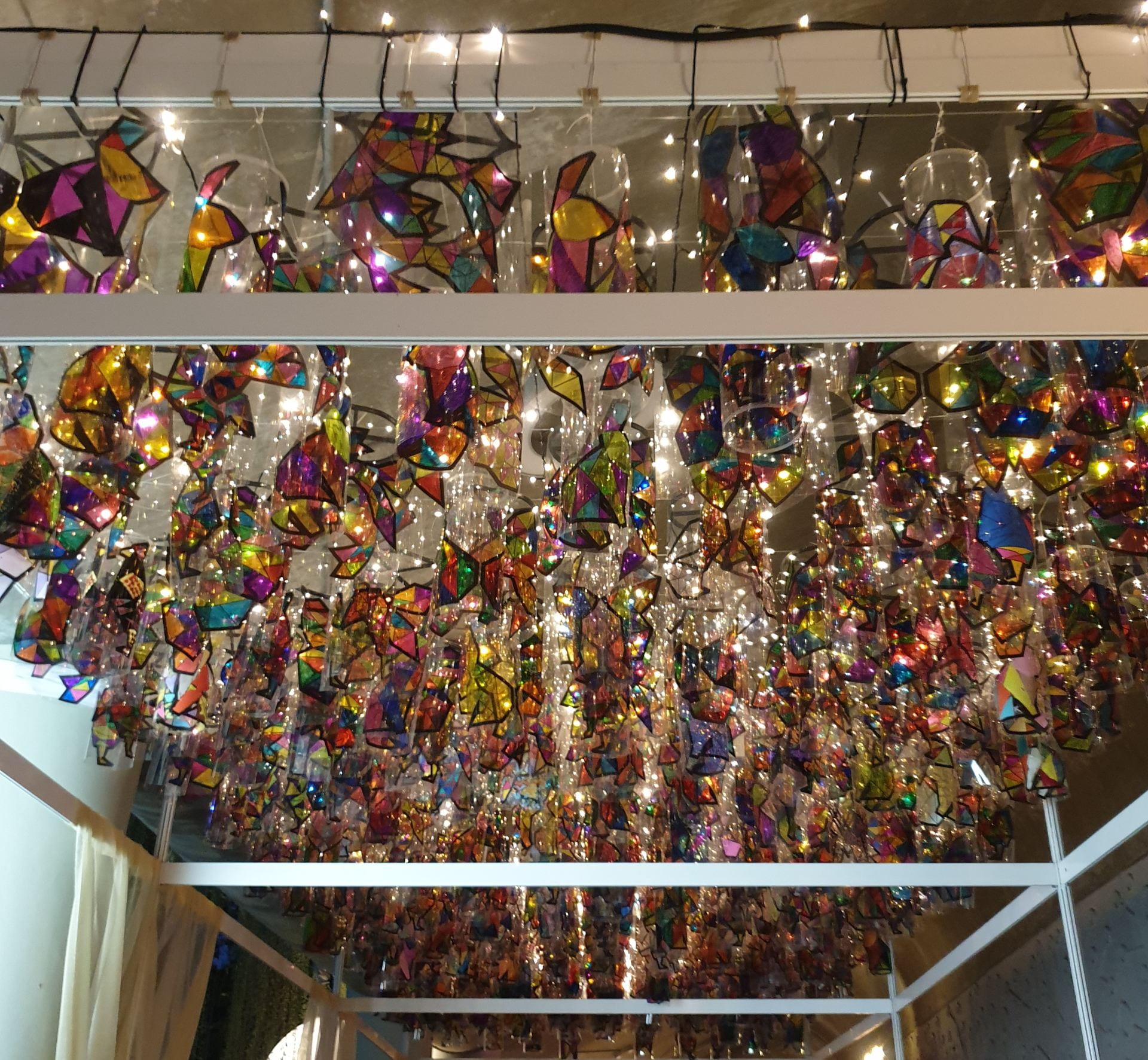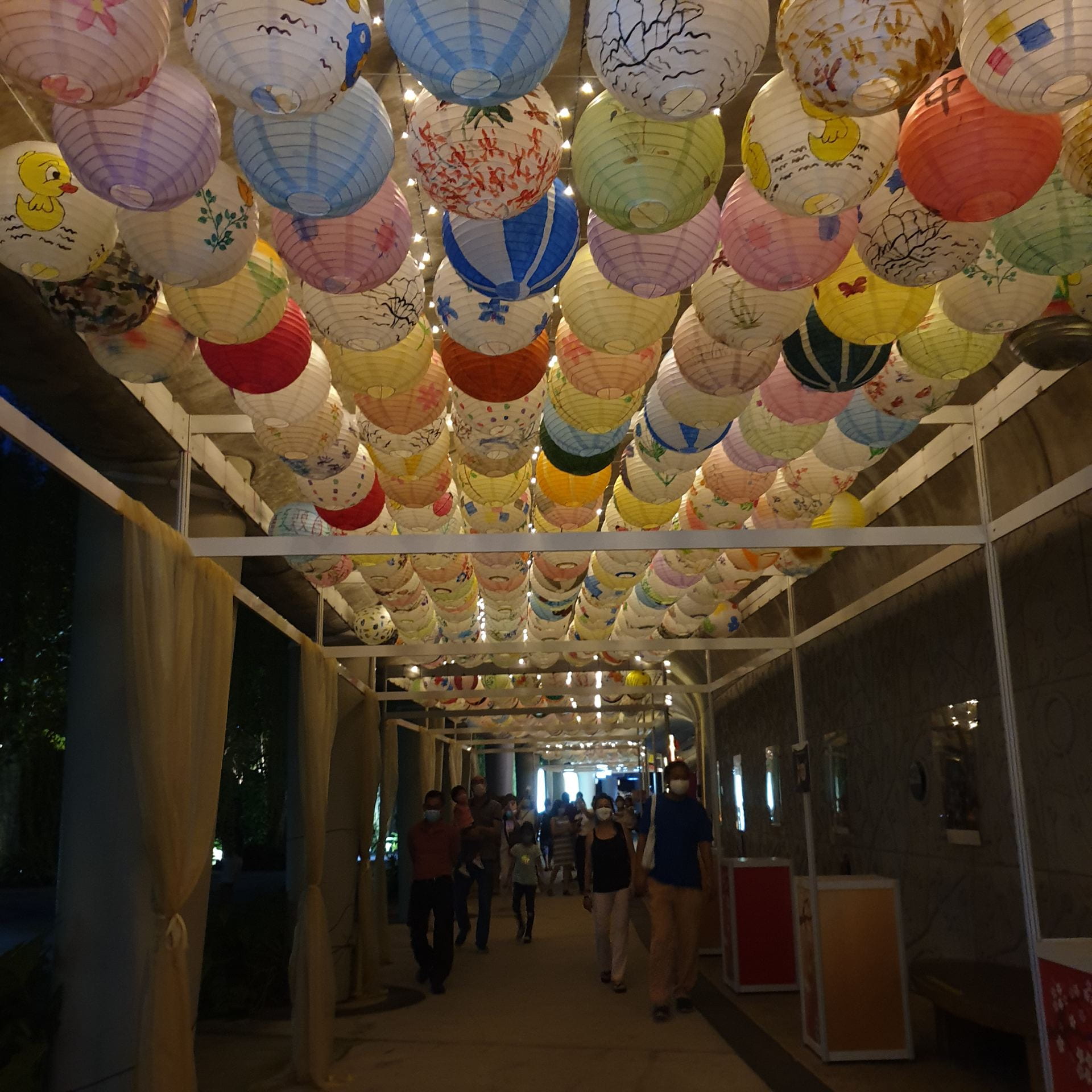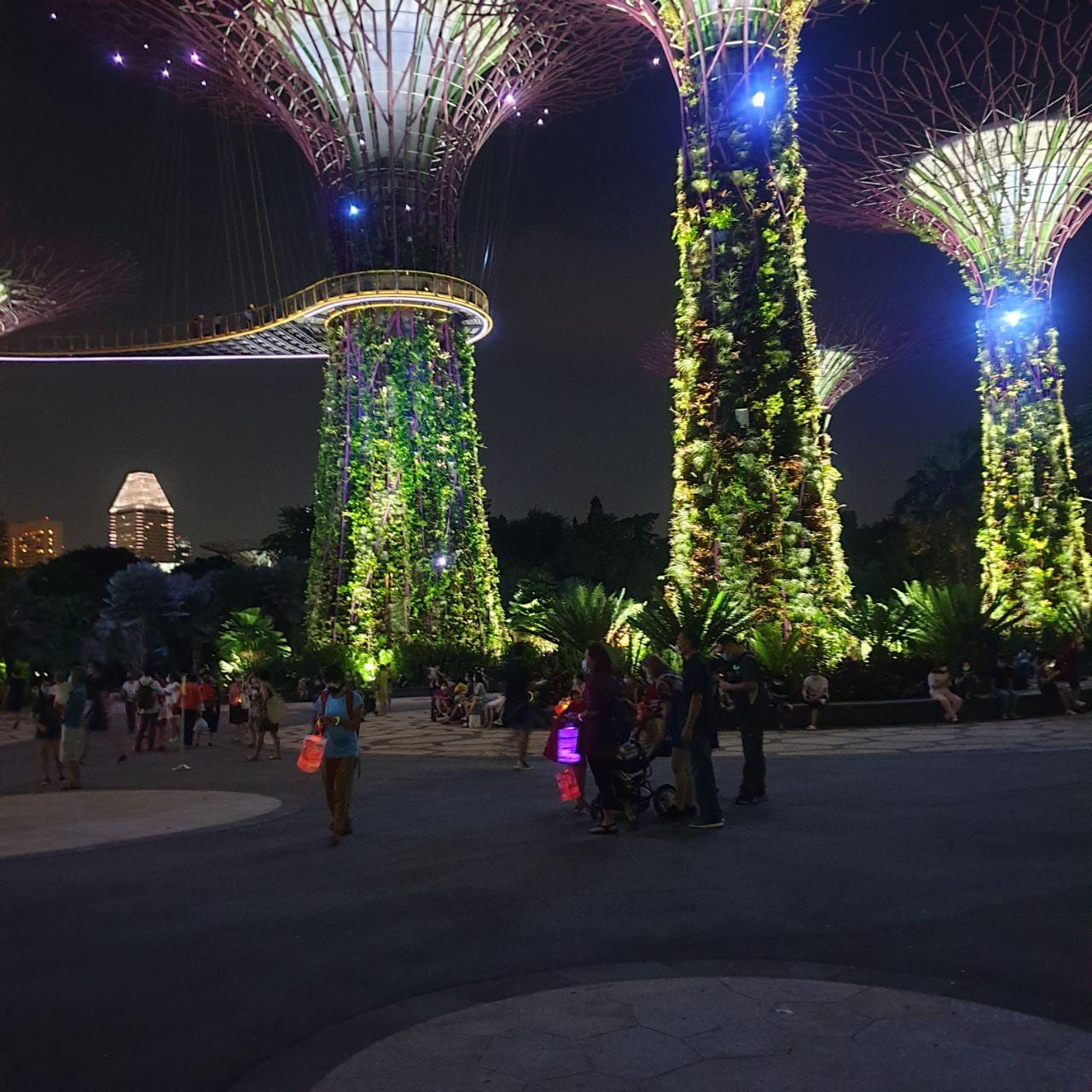Hey Guys!
Its Mid-terms and Mid-Autumn this week, so I hope everyone’s still doing well! Last week I mentioned how mooncakes are a key source of food and packaging waste during the Mid-Autumn festival. This week I will be exploring another key element of the festival, lanterns.
Lanterns are often carried around by celebrants on the night of Mid-Autumn and used as decorations as well. These lanterns can range from the traditional paper and cellophane lanterns to the modern plastic lanterns. They come in all shapes and sizes as well, with some even taking the form of animals or fictional characters! These lanterns of various unique designs help to liven up the celebration, but they also pose the same problem as the mooncakes: waste.
This year, Gardens By The Bay has set up a few lantern displays in the spirit of celebration. Intrigued, I decided to go down to take a look at these installations. Here are some pictures of the displays.


The ‘Illuminations of Joy’ and the ‘Colonnade of Lights’ are two of the lantern displays at the Gardens. Rows upon rows of lanterns stretched as far as the eye could see down the walkway, giving the dull path a vibrant makeover. The ‘Illuminations of Joy’ features 400 cellophane lanterns that were beautifully hand-coloured, while the ‘Colonnade of Lights’ consists of 1,500 paper lanterns that were similarly painted by hand. Many questions came to mind as I admired the decorations… Would these lanterns be re-used in future festivals? Or would they simply be disposed of once the festival was over? How recyclable were these lanterns? I lack the answers to these questions now, but I doubt they paint a pretty picture. These decorations served well to amp up the atmosphere, but they also shed some light on the wasteful nature of the festival.

Of course, the decorations were not the only source of lanterns. Visitors to the Gardens could also be seen carrying lanterns along as they explored the area, especially families with young children. All these lanterns add up to a lot of waste that is produced each year, and Mid-Autumn is not the only festival where lanterns are a big part of the celebration. The quantity of waste is not the only issue for concern here. Materials like cellophane, although biodegradable, are linked with a pollutive production process that involves the use of carbon disulfide and might release methane emissions. As such, cellophane can have a sizeable carbon footprint and might not be that much better than traditional plastics. Lanterns powered by batteries also raise the issue of e-waste collection and disposal.
All in all, it would appear that most celebrations are pretty wasteful and unsustainable due to the many decorations that are often involved. I’m curious to find out what do you think about festivals and sustainability. Are we being too wasteful with all these decorations? Do share your thoughts and opinions in the comments below!
-Jun Yu
P.S. Here’s an interesting video from Hong Kong where recycled plastic bottles were used to create a lantern display for the Mid-Autumn Festival. Perhaps it is possible to celebrate sustainably.
Hi Jun Yu!
I did not realize how wasteful the Mid-Autumn Festival was 🙁 My family was cleaning the house and found some old plastic toy lanterns that my brother and I used when we were younger. We were not sure if they are recyclable so we ended up throwing them away…
Do you think people will be willing to stop buying/reuse lanterns, decorations, etc. or consider more sustainable options when they are aware of the environmental impacts? Especially since people are so used to the traditions and significance of practices like buying new clothes and decorations for Chinese New Year.
– Si Ying
Hi Si Ying!
Thanks for reading! Indeed, festivals can be very wasteful and promote unsustainable practices. I feel that it will still be challenging to change the mindsets regarding these traditions and customs even if one is aware of the environmental impacts. These practices have been rooted in our culture for so long and hold special meaning to the festivals so one may not be so ready to give them up. Furthermore, they might see these celebrations as a ‘once a year’ thing and not see the severity of the issue. I’m also curious to find out more on the willingness to be sustainable when celebrating festivals and might make a post on it in the future!
-Jun Yu
Hello Jun Yu!
Thank you for shedding light on the wasteful nature of festivities, this was something that I only started to think about recently. Indeed, another festival would be Chinese New Year, where billions of red packets are made from paper and packaged in plastic wrappings or boxes! (Can you imagine replacing these red packets with “e-ang baos” instead? What a concept!)
I agree that it’s going to be really tough to change the wasteful nature of festivities, considering how they are closely tied to cultures and traditions, and have thousand-year-long histories! Removing or changing any one aspect would seem to erode the festivity itself, and I’m not sure if there’s anything we could do about it. Festivals are often loud, colourful and bright, and all these have some sort of environmental consequence – Chinese New Year, Christmas, even National Day where millions of flags and goodie bags are produced and distributed to the public!
For the concept of using recycled bottles for art installations, although it provides an alternative to producing more and creating more waste, I think that there are downsides to it as well. Imagine the labour required to get and transport all these bottles, assemble them and move the artwork to the display location – think about the carbon emissions produced! Moreover, they’ll need metal wires and adhesives to glue everything together, so wouldn’t that take up resources as well? 🙁
Hi Yee Qi!
I totally agree. These practices are a huge part of the celebrations and it would feel very different if we were to do away with them. I think you’ve brought up a great point about the downsides of the art installation and it highlights just how difficult it can be to celebrate our festivals sustainably. Even when we shift to such alternatives there is still waste produced no matter what, especially when life cycle thinking is applied. I feel that such is the nature of festivals, as most of them promote this culture of ‘wants’, which leads to wasteful consumption patterns. It would be interesting to see what would be enough to change one’s mindsets on festivals and choose to celebrate in a sustainable manner instead.
-Jun Yu